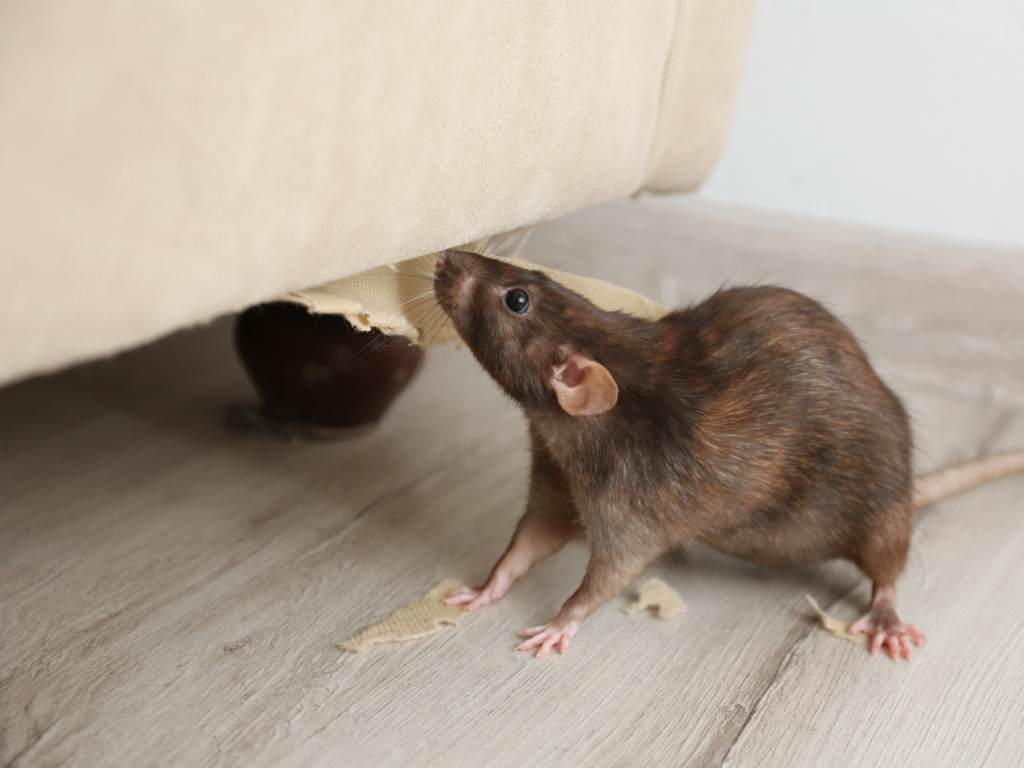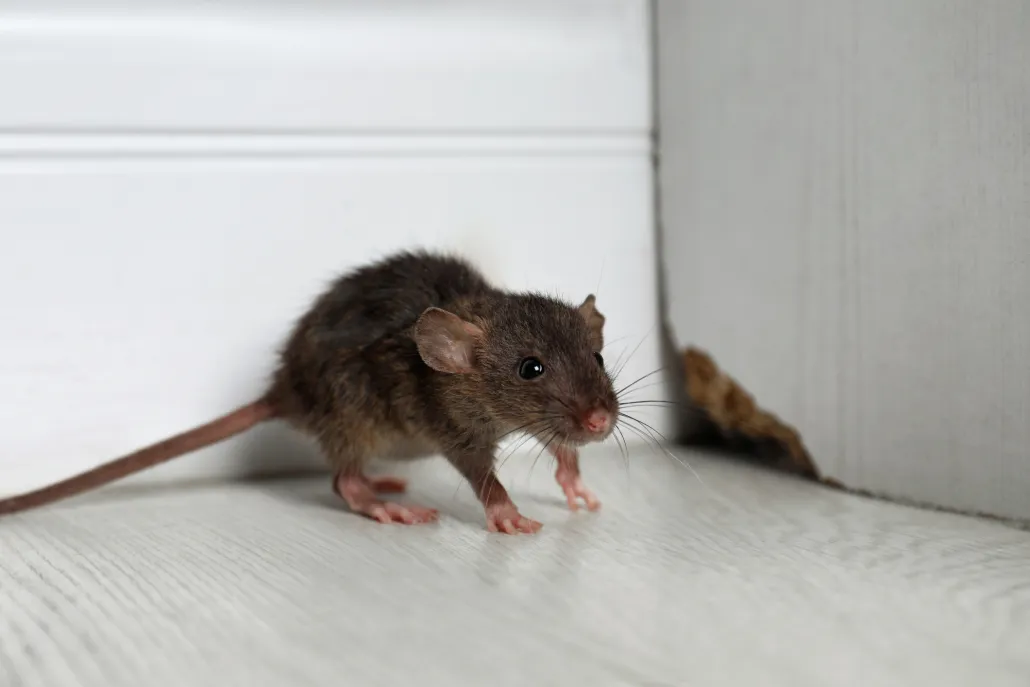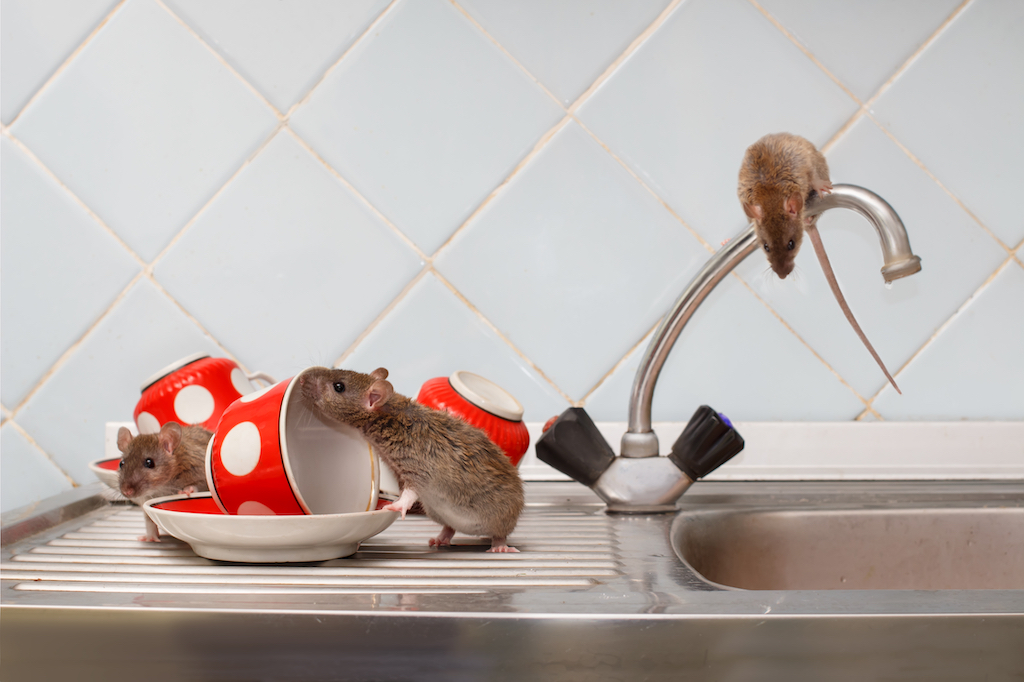Rodent Treatments in Florida:
Exterminator Services for Bradenton, Parrish, and Palmetto
Florida’s warm climate, abundant rainfall, and lush landscapes enchant residents and visitors year-round. Unfortunately, these same attributes also support high rodent activity, allowing mice, rats, and other pests to breed continuously with minimal seasonal slowdown. If you operate a business or own a home in Bradenton, Parrish, or Palmetto, rodents can infiltrate, bringing health and safety risks, structural concerns, and everyday stress for occupants. Whether you spot droppings, hear scratching noises at night, or notice gnawed packaging, prompt rodent treatments remain crucial to regaining a clean, comfortable setting. This service page explains why rodents thrive in the Florida environment, how to detect signs of an infestation, and how working with a knowledgeable exterminator eliminates rodents effectively while preventing re-infestations.
Why Rodents Flourish in Florida

- Year-Round Mild Weather
In colder regions, harsh winters impose natural population limits, compelling rodents to either find scarce indoor hideouts or endure freezing temperatures that can reduce their numbers. By contrast, Florida winters rarely plummet low enough to disrupt rodent activity. Rats and mice can thus continue foraging and reproducing throughout each season, allowing a modest colony to enlarge within weeks if unchecked. - High Humidity and Rainfall
Warm air combined with frequent rainfall yields moist soils, sustained vegetation, and plenty of water sources—conditions that rodents love. Yards with poorly draining soil, clutter, or overgrown shrubs grant mice or rats ample hiding places. When heavy rainfall or storms flood their outdoor nests, rodents relocate indoors, sneaking through minute openings in siding, roof eaves, or foundation gaps. - Ongoing Food Availability
Rodents consume almost any accessible organic matter—whether that be open garbage cans, unsecured pantry items, or leftovers left out for pets. Urbanization and human activity routinely present easy meals for rats and mice rummaging near trash bins or rummaging inside kitchens. Any lapses in food storage or cleanliness can encourage rodents to settle in. - Minimal Seasonal Dormancy
In states with long, freezing winters, rodents reduce breeding. Florida’s climate spares them from lengthy inactive periods. Mice and rats remain fully capable of bearing litters year-round, making even a small infiltration a threat to escalate swiftly if not immediately addressed. - Mixed Residential and Commercial Development
Bradenton, Parrish, and Palmetto each offer unique blends of older homes and newer construction. Renovation or expansion projects can disturb established rodent nests, prompting them to shift indoors if entry points remain unsealed. Older structures might exhibit cracks near foundations or worn-out door sweeps that provide an open invitation to rodents seeking warmth and food.
Common Rodent Species in Florida
- House Mice (Mus musculus)
Small, grayish-brown rodents, house mice slip through holes the size of a dime to reach food or nesting spots. They breed swiftly, particularly where they find easy meals such as crumbs or cereal boxes. House mice often concentrate in kitchens, pantries, or utility closets. - Roof Rats (Rattus rattus)
Sometimes called fruit rats, these agile climbers often dwell in attics or upper levels of buildings, entering from tree branches or utility lines near the roof. Once inside, they make nests in rafters or insulation, scavenging from kitchens at night. They pose added danger if they chew through wiring, elevating fire hazards. - Norway Rats (Rattus norvegicus)
Bulkier and shorter-tailed than roof rats, Norway rats generally prefer ground-level habitats or burrows near foundations. They create tunnels under slabs or within crawl spaces, gnawing on wood or plastic to shape entryways. Gaps around pipes or subfloor corners often become infiltration points. - Field Mice/Deer Mice
In transitional or semi-rural areas like Parrish, field mice might appear from farmland or expansive yards. If these smaller rodents lose external shelter (due to storms, development, or yard cleanup), they may search out indoor warmth, especially if unsealed cracks exist.
Warning Signs of a Rodent Infestation
- Droppings
Mice leave droppings akin to dark grains of rice, while rats produce larger, capsule-shaped pellets. Both types accumulate near feeding or nesting sites, under sinks, behind large appliances, or along baseboards. Fresh droppings are moist and dark, turning dull with age. - Gnaw Marks
Rodents maintain their incisors via constant chewing, leaving bite marks on cables, cardboard packaging, wood, or plastic. Holes in cereal boxes or gnawed edges on baseboards serve as glaring evidence of rodent traffic. - Nocturnal Sounds
Scratching or scuttling at night inside walls, under floors, or across attic beams often reveals rodent activity. Noting the time and location of sounds can help an exterminator pinpoint nesting spots and travel routes. - Nests and Shredded Material
Rodents gather paper, fabric, or insulation to craft nests in secluded corners—like inside drawers, behind cabinets, or near stored boxes. Presence of droppings near these piles indicates active occupation. - Strange Pet Behavior
Dogs or cats might stare fixedly at walls, whine or paw at seemingly empty spaces, or sniff around behind appliances if they sense rodents. A persistent focus on certain areas often uncovers hidden rodent runs or nest pockets.
Why Prompt Rodent Treatments Matter
- Disease and Sanitation Risks
Mice and rats contaminate surfaces with droppings and urine, potentially transmitting bacteria or viruses. Their fur can also carry fleas or ticks indoors. Early rodent treatments protect occupant health by halting contamination pathways. - Rapid Reproduction
A single pair of mice or rats produces multiple litters annually in Florida’s mild weather. Failing to intervene quickly may lead to exponential population growth, dramatically increasing the damage and cost of repairs or advanced extermination measures. - Structural and Wiring Damage
Rodent gnawing extends to insulation, wooden beams, or electrical lines, heightening fire hazards or weakening building integrity. Controlling rodents early spares extensive renovations, especially if they have nested behind walls or in attics. - Continuous Stress
The scuttling of rodents at night or the discovery of droppings near pantry goods unnerves residents and businesses. Maintaining a rodent-free space ensures people can rest easy without fear of contamination or sudden rodent appearances.

How a Professional Exterminator Eradicates Rodents
- Inspection and Assessment
A thorough property check identifies nesting zones, species type, and infiltration routes. Examining attics, crawl spaces, garages, and yard perimeters reveals droppings, gnaw marks, or nesting material. Recognizing whether the culprits are house mice or roof rats steers the subsequent strategy. - Sealing Entry Points
Because rodents wiggle through quarter-inch openings, sealing foundation cracks, installing door sweeps, and patching holes near pipes or vents proves essential. Blocking new migrations is crucial after eliminating existing populations. - Trapping and Baiting
Technicians place snap traps, multi-catch devices, or tamper-resistant bait stations along rodent paths—like walls or behind appliances. Baits might contain rodenticides that rodents carry back to their nests, leading to colony-wide eradication. Traps need regular monitoring for disposal of caught rodents. - Sanitation and Exclusion
Removing clutter, securing garbage bins, storing food in sealed containers, and tidying pet feeding zones deplete rodent resources. This step denies rodents consistent access to easy meals, encouraging them to eat baits or leave the area. - Follow-Up
Because new litters can emerge weeks after initial control, scheduling re-checks helps verify no hidden nest remains. If fresh droppings surface, secondary treatments or reinforcing sealants block rodents from reclaiming the premises.
Serving Bradenton, Parrish, and Palmetto
Bradenton: This vibrant city along the Manatee River features waterfront dwellings, older neighborhoods, and a busy downtown. Rodents exploiting basement or yard-level moisture can expand quickly if property owners leave minimal cracks unsealed. Routine checks—especially in older homes—limit infiltration.
Parrish: Blending farmland, new subdivisions, and developing commercial sectors, Parrish sees frequent construction that disturbs outdoor rodent nests. Mice or rats evicted from natural habitats often seek warm corners in garages or behind walls. Thorough property assessments each season help detect early rodent arrivals.
Palmetto: Located across the river from Bradenton, Palmetto offers Florida charm alongside modern convenience. Whether near the waterfront or deeper inland, older wooden structures, yard debris, or adjacent farmland can host rodent families unless consistent sanitation and barrier methods deter them.
Why Choose Our Rodent Control Methods
- Florida-Specific Experience
Unlike cooler regions, southwestern Florida’s rodent populations rarely slow down in winter. Our solutions integrate your property’s layout with the region’s climate, ensuring year-round readiness for roach- or rat-based infiltration. - Targeted, Safe Practices
We emphasize directed trap or bait placements along rodent routes. This approach reduces occupant exposure to chemicals while maximizing rodent contact with control measures. If children or pets reside on-site, specialized tamper-resistant stations keep them safe. - Structural and Maintenance Insights
Beyond just removing rodents, we guide property owners on sealing cracks, disposing of trash properly, or reorganizing clutter-prone storage areas. Adopting these small changes hinders future infestations. - Follow-Up Assurance
Because rodents breed quickly, a single wave of removal might leave pockets of undiscovered juveniles. Scheduling re-checks ensures total coverage—identifying fresh droppings early, adjusting treatments, or reinforcing sealed entryways to maintain a rodent-free zone.
- Florida-Specific Experience

Next Steps
Have you uncovered mouse droppings in cupboards, chewed cereal boxes, or squeaking sounds behind walls at night? Contact us to learn more or schedule your service. Our mice treatments in Bradenton, Parrish, and Palmetto target rodents at their source, cutting off entryways, removing hidden nests, and ensuring no new arrivals remain undetected. A professional exterminator approach blends strategic trap placement, thorough sealing, and occupant education—restoring your property’s comfort and hygiene.
Immediate action prevents small infestations from ballooning, reduces health risks, and spares the aggravations of constant rodent scuttling or contamination. Whether for a bustling family home, a local business, or a large commercial building, robust rodent control in Florida’s climate keeps unwanted guests at bay year-round.
Sustaining a Rodent-Free Space
Achieving rodent removal is only half the story; maintaining a protective environment demands consistent vigilance:
- Secure Food Storage: Keep cereals, grains, and pet kibble in sturdy plastic or metal containers. Sweep up crumbs promptly, especially under appliances.
- Prompt Trash Disposal: Use bins with tight-fitting lids and remove waste from kitchens daily. Outdoor dumpsters should remain away from building exteriors.
- Repair Leaks and Damp Zones: Fix dripping taps or AC condensate lines. Drying out damp corners denies rodents a key resource—water.
- Yard Tidiness: Mow lawns regularly, clear leaf piles, and prune shrubs away from walls. Rodents shy from open, well-groomed zones lacking hideouts.
- Scheduled Checks: Listen for odd noises, watch for droppings, or examine potential re-entry points every few months. Early detection fosters swift, minimal cleanup.
By uniting occupant awareness with professional rodent control, southwestern Florida residents can relish the region’s sun and coastal breezes instead of contending with scurrying rodents. Thorough extermination plus dedicated upkeep produce a cleaner, healthier property, letting families and businesses operate confidently year-round.
